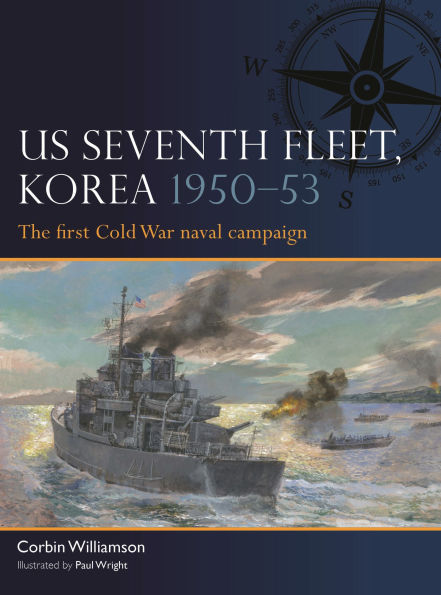Fought just five years after the US Navy's carrier-led forces swept into Tokyo Bay, the naval campaign in Korea was a very different war, and one that set the trend for naval warfare for the rest of the century.
In this book, Dr Corbin Williamson, a specialist on the US Navy of the period, explains how a fleet built to fight an uncompromising total war rapidly adapted to a successful Cold War multinational intervention. Seventh Fleet's role included blockading enemy ports, escorting convoys, close air support, interdiction, naval gunfire support, and amphibious invasions and evacuations. With few exceptions, Seventh Fleet's command of the sea around Korea was unchallenged, allowing the fleet to focus its efforts on supporting the ground war.
The Korean War was also part of a period of intense technological change, and it saw the combat debut of naval jet aircraft and helicopters. Packed with battle diagrams, photographs and meticulously researched battlescenes, this book examines the ships and technology, command and organization, logistics, intelligence, and combat performance of the fleet. It is a rounded portrait of how Seventh Fleet proved the flexibility and importance of sea power in an unexpected theater.
Fought just five years after the US Navy's carrier-led forces swept into Tokyo Bay, the naval campaign in Korea was a very different war, and one that set the trend for naval warfare for the rest of the century.
In this book, Dr Corbin Williamson, a specialist on the US Navy of the period, explains how a fleet built to fight an uncompromising total war rapidly adapted to a successful Cold War multinational intervention. Seventh Fleet's role included blockading enemy ports, escorting convoys, close air support, interdiction, naval gunfire support, and amphibious invasions and evacuations. With few exceptions, Seventh Fleet's command of the sea around Korea was unchallenged, allowing the fleet to focus its efforts on supporting the ground war.
The Korean War was also part of a period of intense technological change, and it saw the combat debut of naval jet aircraft and helicopters. Packed with battle diagrams, photographs and meticulously researched battlescenes, this book examines the ships and technology, command and organization, logistics, intelligence, and combat performance of the fleet. It is a rounded portrait of how Seventh Fleet proved the flexibility and importance of sea power in an unexpected theater.

US Seventh Fleet, Korea 1950-53: The first Cold War naval campaign
80
US Seventh Fleet, Korea 1950-53: The first Cold War naval campaign
80
Product Details
| ISBN-13: | 9781472866868 |
|---|---|
| Publisher: | Bloomsbury USA |
| Publication date: | 08/26/2025 |
| Series: | Fleet , #12 |
| Pages: | 80 |
| Product dimensions: | 7.30(w) x 9.75(h) x 0.25(d) |
